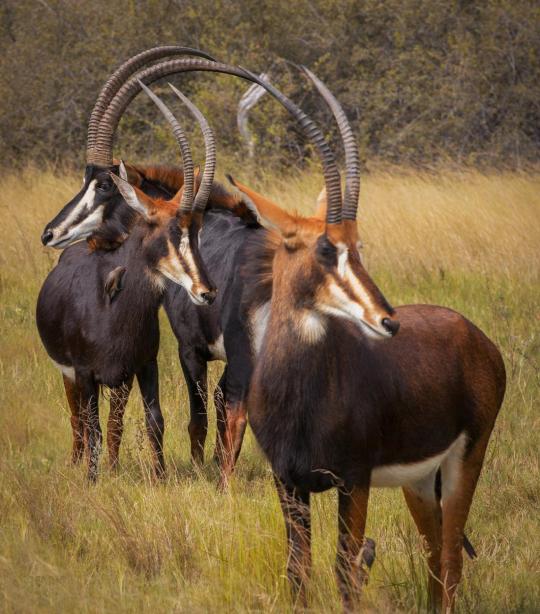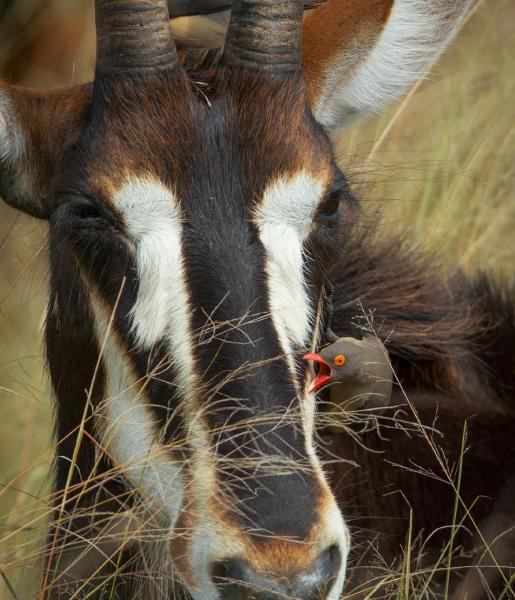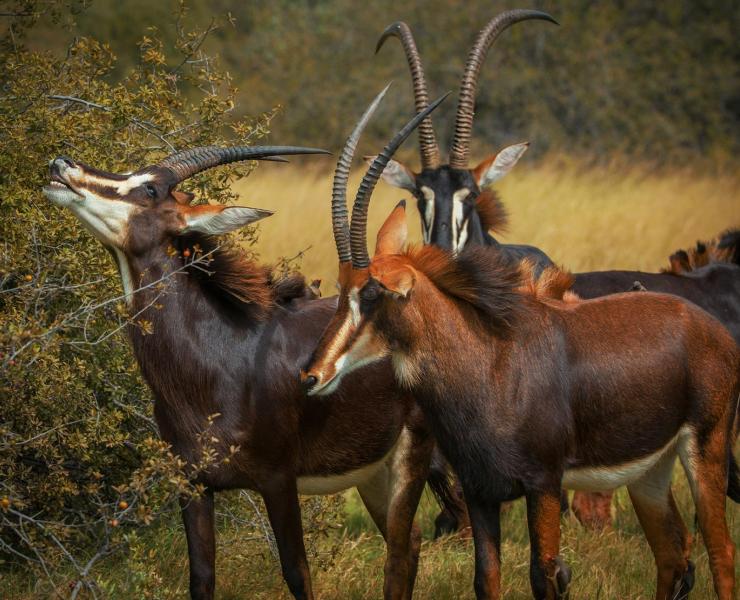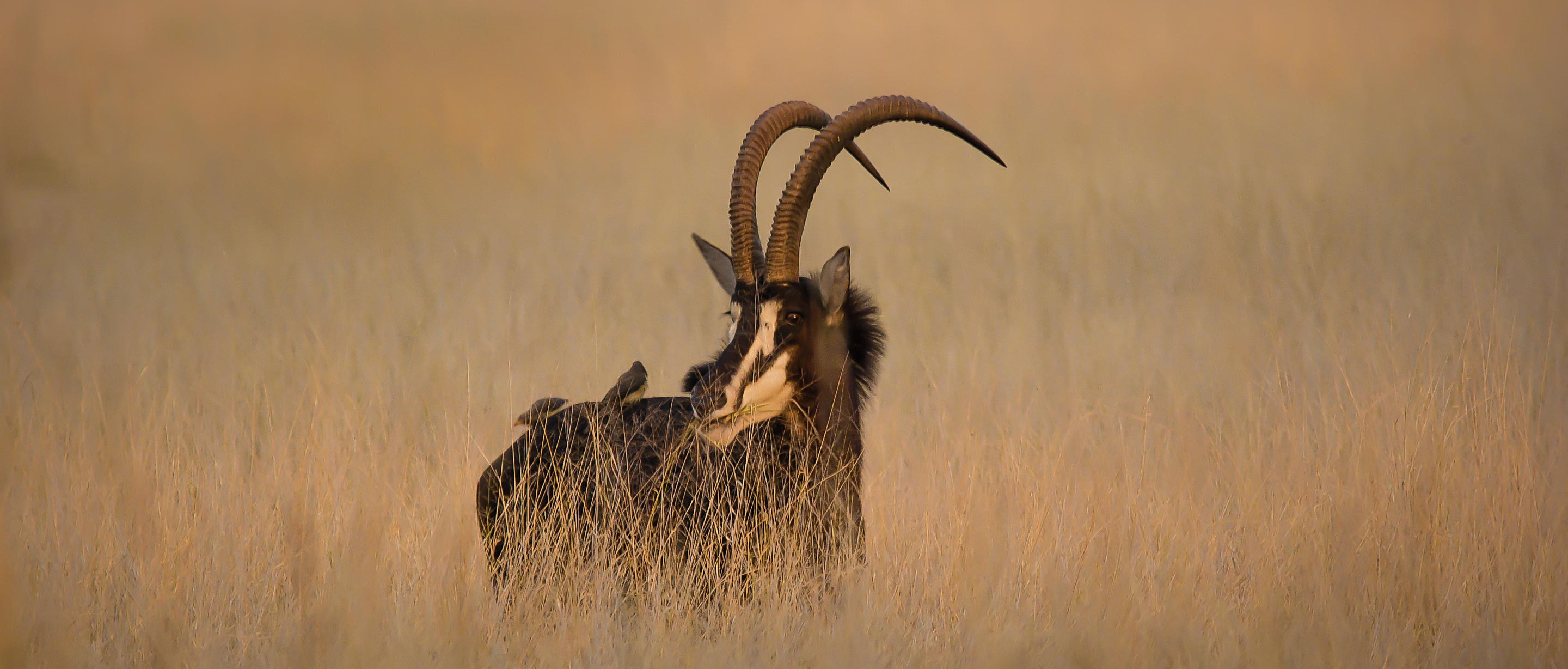What is a sable?
The sable is a rotund, barrel-chested antelope with a short neck, long face, and dark mane. Both males and females boast impressive ringed horns that rise vertically and curve backward. When they arch their necks and stand with their heads held high and tails outstretched, they resemble horses. This flexed-neck position makes sables appear larger than they really are. The males maintain this position even when they gallop, as the arched neck is an important manifestation of dominance.
As they grow older, sables change color. Calves are born reddish-brown, with virtually no markings. As they age, the white markings appear, and the rest of the coat gets darker — the older the animal, the more striking the contrast.
Hippotragus niger
220 to 238 kilograms (485 to 525 pounds)
116 to 142 centimeters in height (45 to 56 inches)
Up to 16 years in the wild; up to 20 years in captivity
Savanna woodlands
Herbivorous
8 to 9 months
Humans, lions, leopards, hyenas, hunting dogs, crocodiles

Challenges
The sable is competing for land.
This antelope has the tendency to settle near water, in areas with good drainage and good grazing, putting them in direct conflict with humans who also value this type of land for agriculture and livestock.
Solutions
Our solutions to protecting the sable:
In Kenya, communities have improved their livelihoods through a partnership with Ol Pejeta Conservancy, financed by African Wildlife Foundation. The Linking Livestock Markets to Conservation initiative links pastoralists to premium livestock markets and provides high prices to pastoralists who adhere to conservation criteria, thereby reducing overstocking, rangeland degradation, and resource competition for wildlife like the sable.
At AWF, we know that successful tourism goes hand in hand with an abundance of a rich variety of wildlife. In the Laikipia region of Kenya, the Koija Starbeds Lodge was constructed to provide tourists with an enriching experience while, at the same time, setting aside protected land for wildlife and creating jobs and incomes for the local community. The land at Koija Starbeds has recovered well from past overgrazing and now supports higher numbers of wildlife.


Behaviors
Group social structures change with the seasons.
Generally, this antelope's social structure is made up of small female herds shepherded by a territorial male during the rainy season and a merging of groups sharing grazing pastures during the dry season.
Males with the best territories have the best mating success. The herds have home ranges that encompass several male territories. Once a female group wanders into a male's territory, he tries to keep her there, especially if any females are in heat.
Like many other antelopes, sables hide newly born calves.
In some areas, breeding females give birth during a two-month period, the timing of which changes slightly from year to year. When ready to give birth, the female, often in the company of several other pregnant females, leaves the herd and seeks a secluded place in the bush. After birth, she leaves the calf hidden in the tall grass or bush, returning once or twice a day to suckle the infant. After a couple of weeks, when the calf is strong enough, she takes it back to her herd. As the calves obtain adult coloration, the territorial males and the females push the young males from the natal herd. The young females remain, taking their place at the bottom of the hierarchy.
Diet
Sables have a fondness for grass.
They eat mostly grass, but at times, will eat herbs and leaves from shrubs and trees. They are never found very far from water and are especially dependent upon it during the dry season.
Habitats
Where do sables live?
They live in areas of light woodland — especially "miombo," a mixture of bush and grassland — but usually avoid open grassy plains.



